{This post was originally published in 2016. We’re reposting it now because it’s delicious cold-weather comfort food.}
Vanilla is our ingredient of the season. So far we’ve made some vanilla-infused vodka (great for milkshakes!) and a double vanilla cake. Today we’re turning our attention to a savory dinner.
Do you have any snow on the ground? We had a fantastic snow day yesterday! I read that Boulder’s 16+ inches in yesterday’s storm is more than the average snow for the month. I was so distracted by the sledding, matinees, and requests for banana cream pie, that I forgot to post. And I think Sarah’s off taking photos of staircases and doorways, so who knows when we’ll hear from here again ;-)? Anyway, today we’re sharing an amazing use for vanilla, and I really hope you’ll give it a try.
When we picked vanilla as the ingredient of the season. I knew I wanted to experiment with some savory dishes. That said, I didn’t have anything in particular in mind, and never in my wildest dreams did I see this savory roasted chicken on the horizon! We eat a lot of roasted chicken, and I’ve become so partial to our chicken with the flavors of preserved lemon and olives, but this dish is far on the other end of the spectrum. The flavors are more subtle, of course there’s the vanilla, but there’s also a mild nutty-ness from the browned butter. It’s a nice compliment to our repertoire of chicken dishes.
Today’s recipe comes from the Electrolux blog, and was created by Ashley from Not Without Salt. Both resources are new to me, and I’m so happy I’ve found them. Go check out the rhubarb cake that she posted today… and then come back if you can pick your chin up off the floor.
On Roasting
Roasting chicken seems to be a delicate balance between creating delicious, juicy breast meat and dark meat that’s falling off the bone. And it seems like people fall into either the white or dark meat camps.
Calder and I both love well-roasted chicken, and we’re dark meat fans. That usually means that we roast the chicken until the breast meat is dry but the legs and thigh meat is falling off the bones. We always roast breast-down to try to reduce their drying-out, but it’s an uphill battle.
I was so intrigued by the methods used in the source. You begin by placing the chicken, breast side down, in a searing pan on the stovetop. This does a great job of browning that skin that would typically end up looking a bit blah if you just did the whole thing in the oven. You then keep the chicken in this position (and pan) and transfer the whole thing to the oven to roast until the internal temp is about 160F. Typically, we would go a bit higher (say 180F), but again, this is just to create dark meat that’s falling off the bone.
Between keeping the bird breast-side-down and cooking to a temp of 160F, the breast meat is not overcooked and came out perfectly juicy, but we were both slightly underwhelmed by the dark meat. Next time I’ll likely roast it longer. Calder (a pro in the kitchen) also suggested slicing open the skin that runs between the thighs and body of the chicken. This will allow the legs to splay open and they will cook slightly faster than the body of the bird.
ETA : we recently made another roasted chicken using this method (searing on the stove top before roast). This time we cut the skin between the legs and body, and roasted the chicken until it was a toasty 185F – everyone loved it!
Ingredients
- 3 lb whole chicken
- 1 lemon, halved
- 1 onion, quartered
- 1 vanilla bean, split down the center
- 4 Tbsp butter
- 2 bay leaves
Instructions
- Preheat your oven to 400F.
- Generously salt and pepper the chicken. Place the lemon, onion, and vanilla bean inside the chicken.
- Place a cast iron pan, lighted coated with olive oil, over a burner on high. Allow the pan to get hot, and then place the bird in the pan, breast side down, to sear for approximately 4 minutes. The pan will spit and sputter. Allow that to happen and do not disturb the chicken.
- Move the pan to the hot oven and allow it to roast until the chicken reaches an internal temperature of at least 160 (see my notes on roasting above).
- When the chicken is done roasting, transfer it to a cutting board or serving dish to cool for at least 15 minutes.
- While the chicken is cooling, make the brown butter sauce. Remove any large bits and some of the drippings from the pan. You don't have to be too diligent, as leaving some drippings will add a nice flavor to the sauce.
- Place the pan back on the stovetop over medium high heat and add to it the butter, bay leaves, and vanilla bean (you have to pull it back out of the chicken). Allow the butter to brown, then remove it from the heat, strain it, and transfer it to a dish for the table. Drizzle a bit of sauce over the chicken before serving. You can also squeeze some of the roasted lemon juice over the chicken for a touch of citrus.
What do you think? Are you intrigued? Or do you already have a favorite use for vanilla in a savory dish? If so, we would love to hear about it!

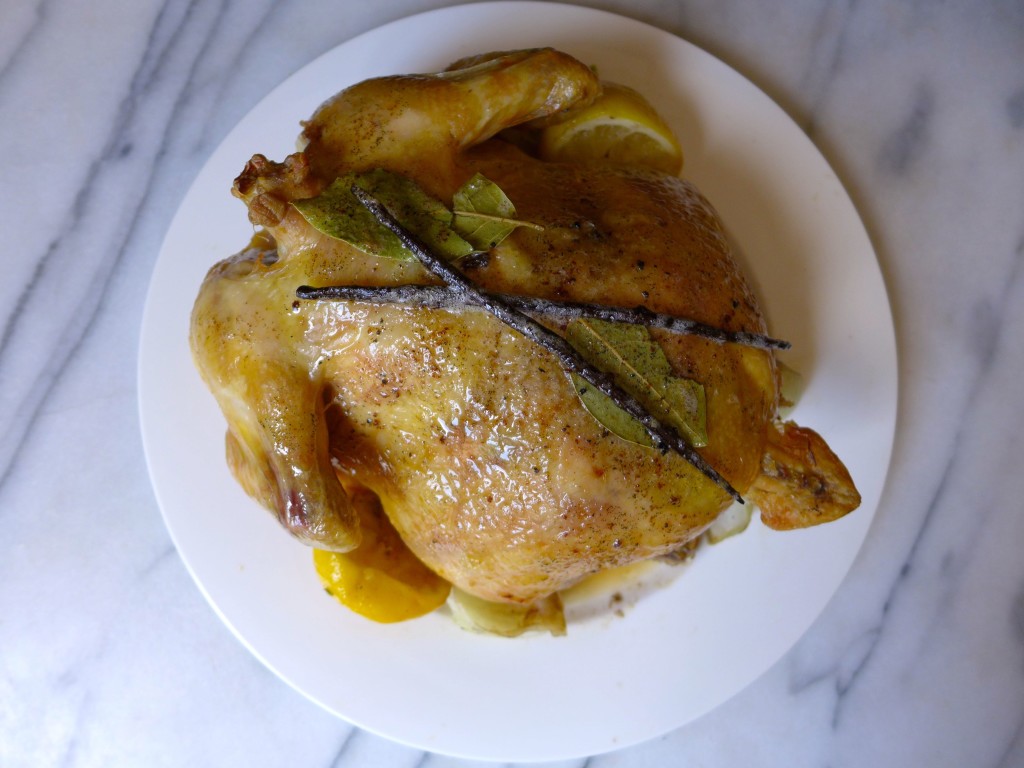
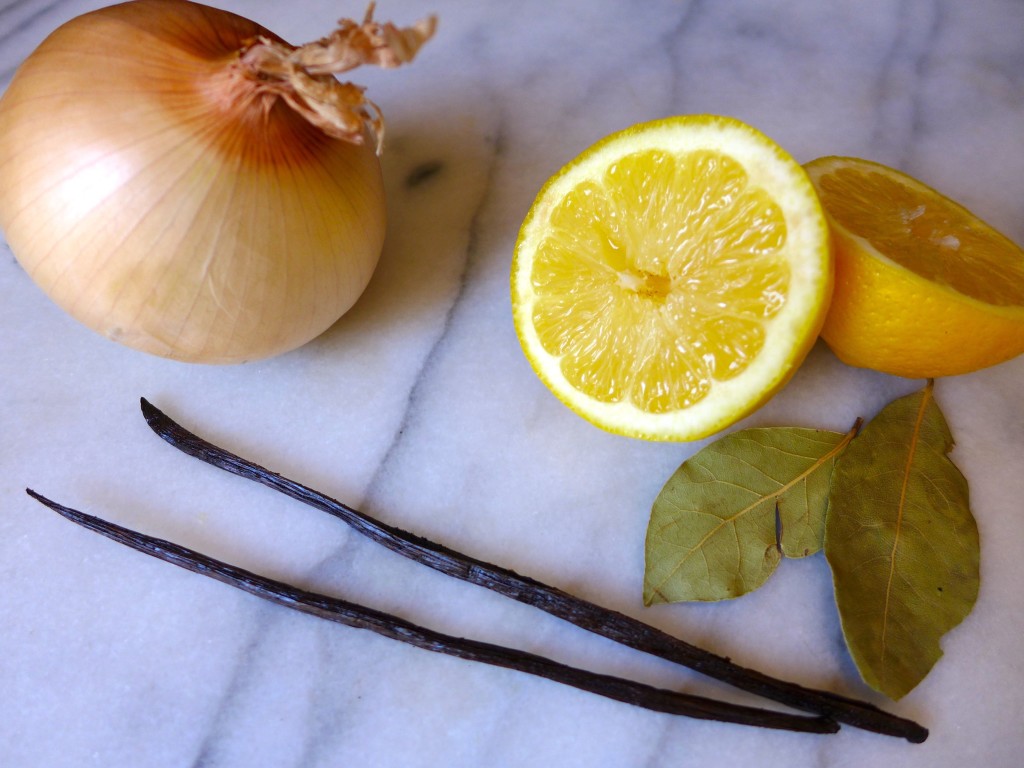
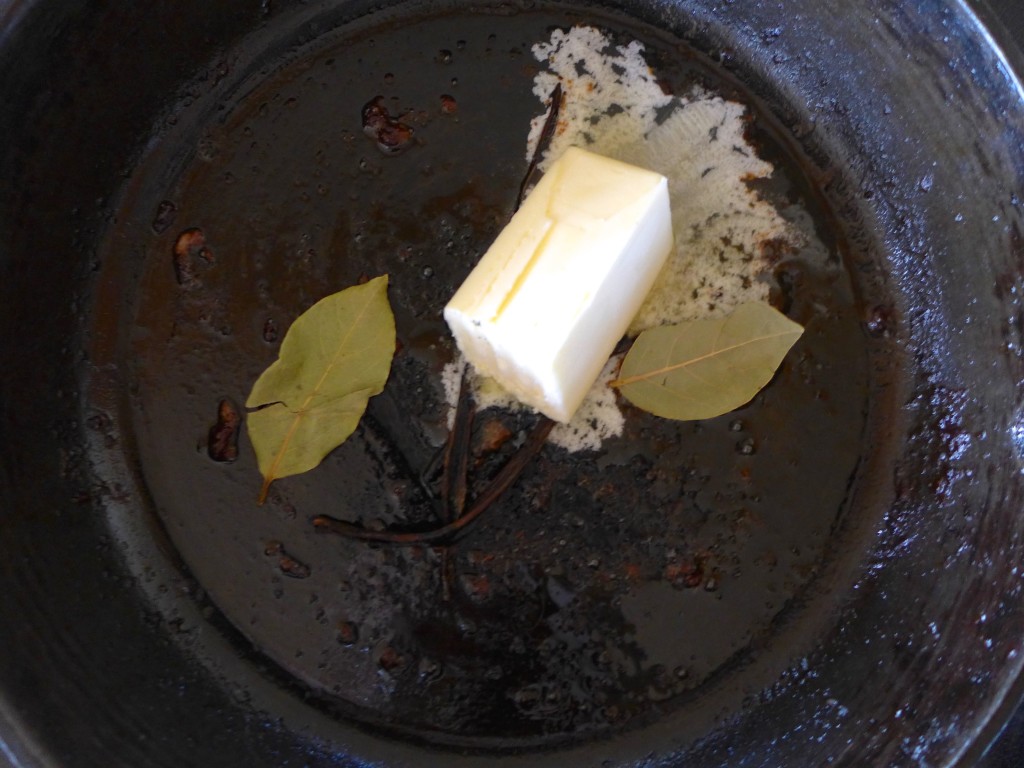
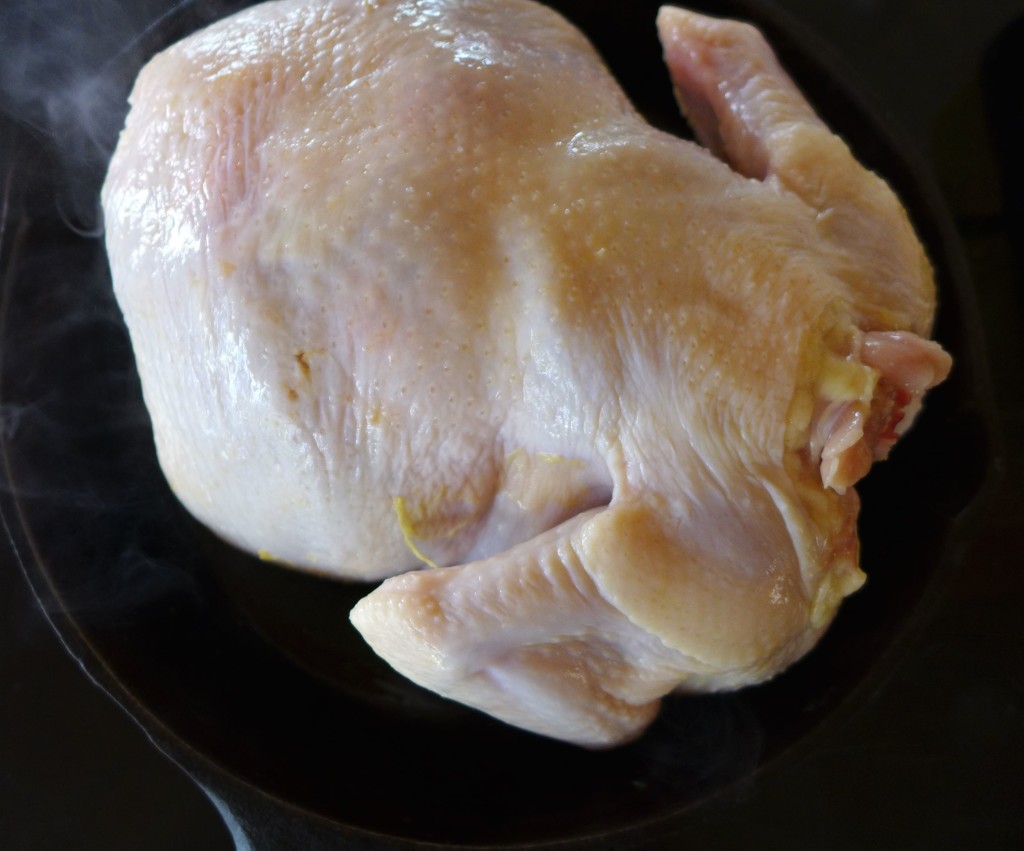
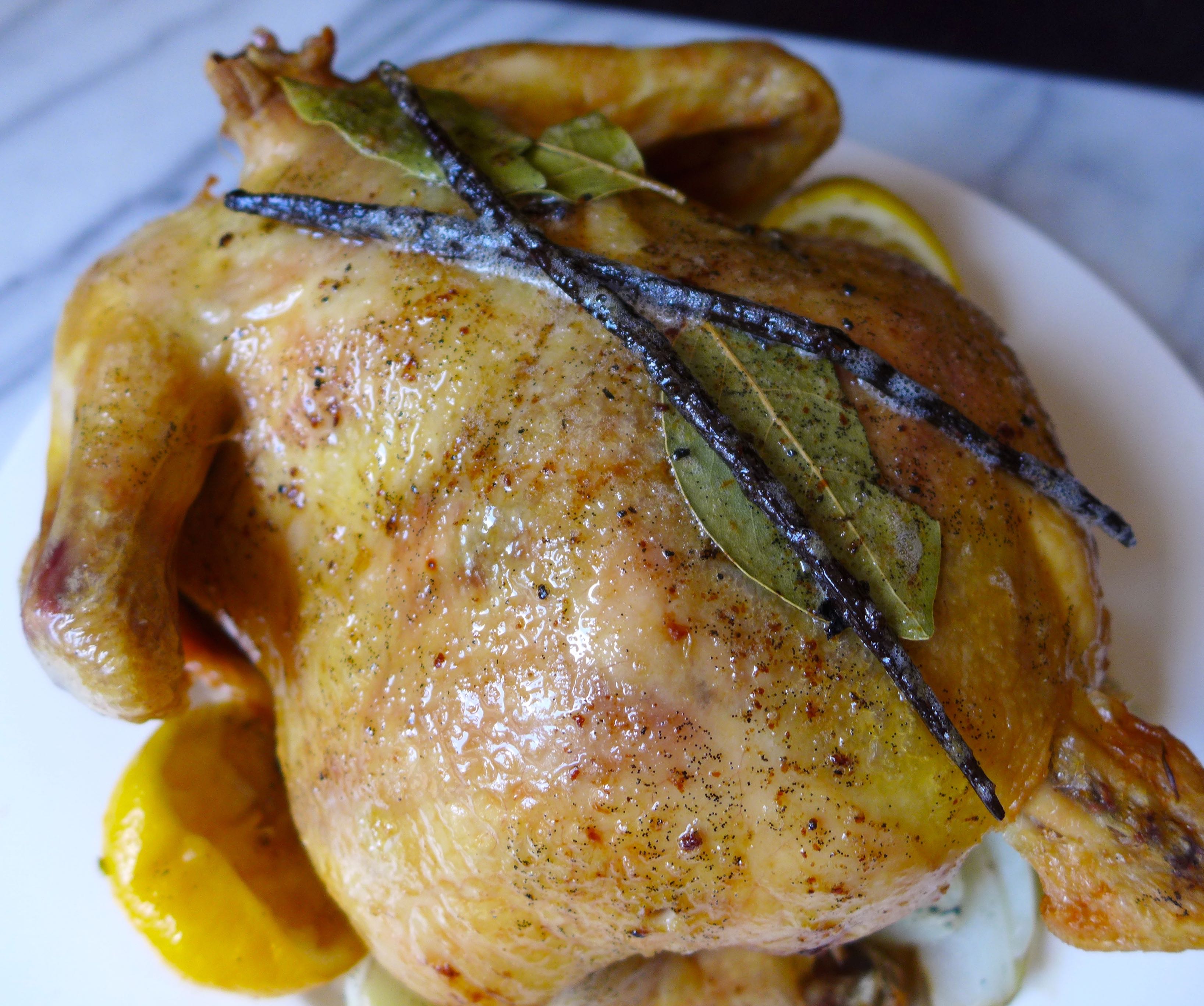
Pingback: November: Vanilla Beans – WPL Spice Club